
Swiss Cylinder Music Box - 8 Airs by Nicole Freres
A 19th century Swiss cylinder music box, playing eight airs by Nicole Freres, numbered 42081 to the label on the lid and to the base. 53 cm wide, 18 cm deep, 13.5 cm high
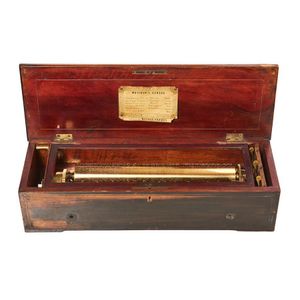
Floral Marquetry Music Box by Nicole Freres
A music box, Nicole Freres, 19th century, floral marquetry inlaid to case. 33 cm cylinder. Lever wind. Ten tunes with tune sheet, 13 cm high, 52 cm wide, 18 cm deep

Nicole Freres Floral Music Box
A music box, Nicole Freres, 19th century, floral marquetry inlaid to lid. 23.5 cm cylinder. Key wind. Eight tune long play, 14 cm high, 45 cm wide, 21 cm deep
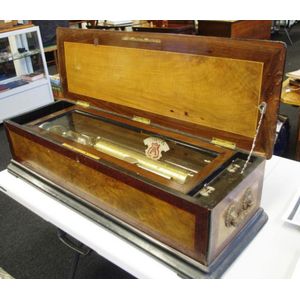
Antique Nicole Freres Cylinder Music Box
Antique Nicole Freres cylinder music box, circa 1880's, marked for Nicole Freres, Geneva and London. Extensive airs (cylinder length 38.5 cm approx). Appears operational. External dimensions: Height 26 cm Width 95 cm Depth 32 cm
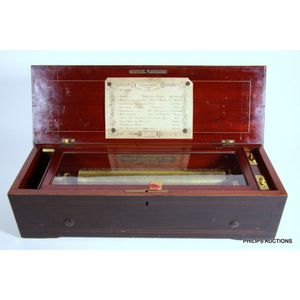
19th Century Music Box by Nicole Freres of Geneva
A Nicole Freres of Geneva rosewood cased music box, 19th century, with retailer's label for Keith, Prowse & Co, Cheapside, in working order, with a floral inlaid panel and stringing to the lid and playing ten airs, with play list under the lid, having a…
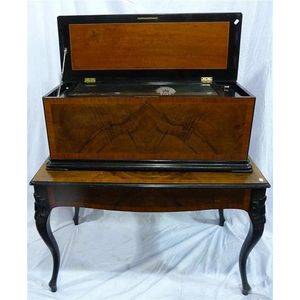
Interchangeable Music Box with Stand and Discs
Nicole Freres, Geneva. Interchangable music box having 6 cylinders in ebonized and cross-banded walnut case on original matching stand. Fitted with record storage in the base. Complete with 10 x 21.5 inch diameter steel discs. 118 cm high, 117 cm wide, 66…
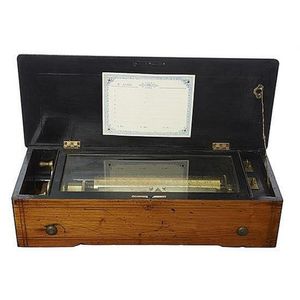
Swiss Musical Box, 8 Air Cylinder, Rosewood Case (9 words)
A Nicole Freres, eight air cylinder Swiss musical box, circa 1870, the rosewood case with olive and satinwood banding and marquetry, in good order

Nicole Freres Symphorien Cylinder Music Box with 12 Tunes
An impressive Nicole Freres symphorien cylinder music box musical box. It has twelve-tunes, within a cross banded and satinwood marquetry inlaid walnut case. 17 cm high, 53 cm wide, 23 cm deep
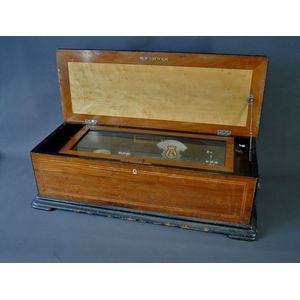
Inlaid Walnut Swiss Music Box with 8 Airs Movement
Swiss Nicole Freres music box. Inlaid walnut case. Twin spring 8 airs movement. Extra cylinder. Good working condition. Height 22 cm. Width 71 cm. Diameter 28 cm
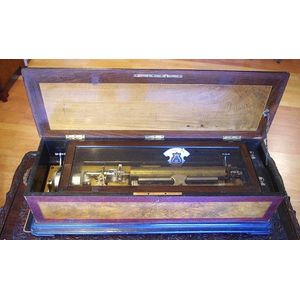
19th Century Nicole Freres Grand Music Box
Nicole Freres 19th century grand format music box in working order, 98 cm wide, 35.5 cm deep 24.5 cm high
 Loading more...
Loading more...